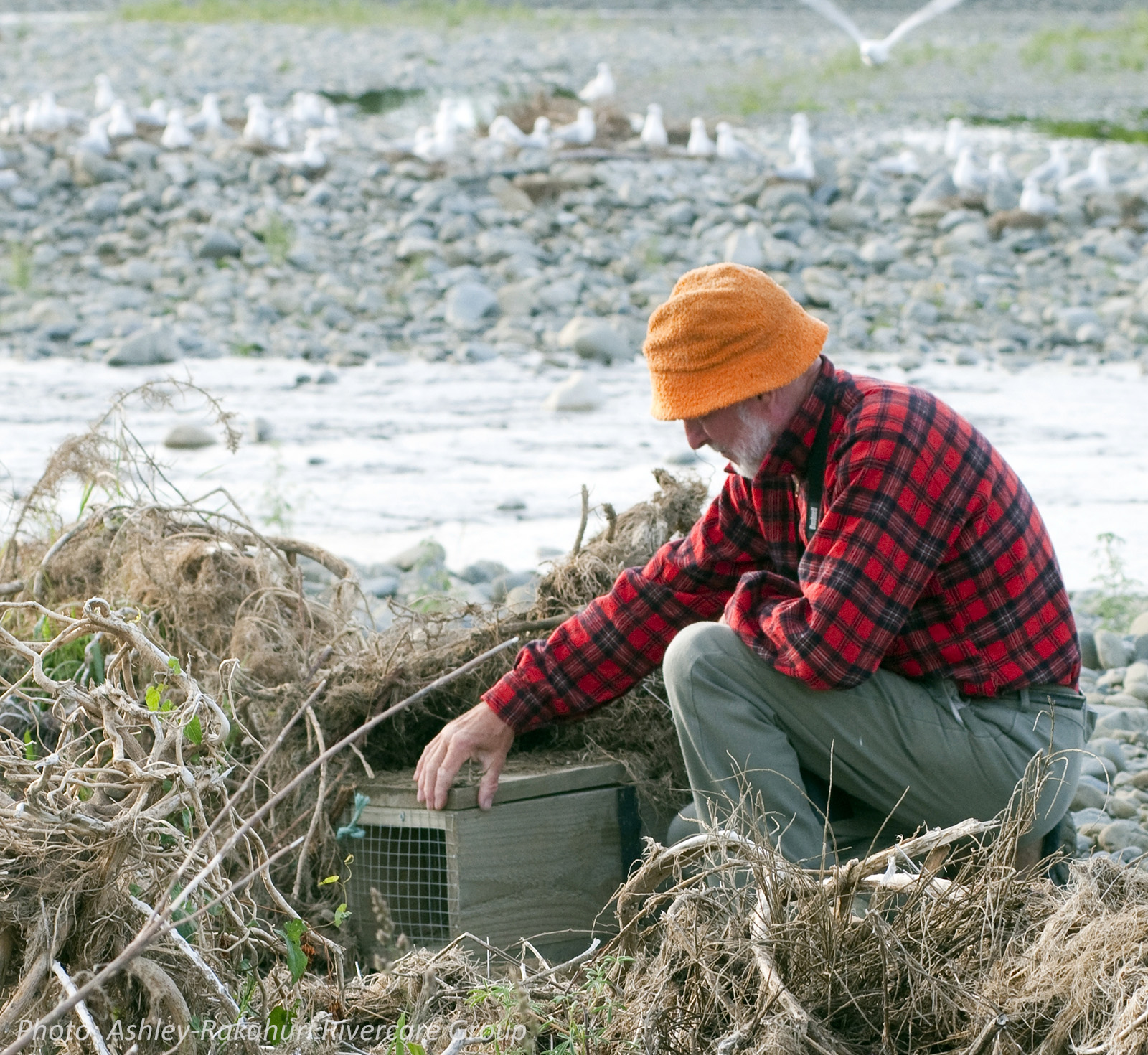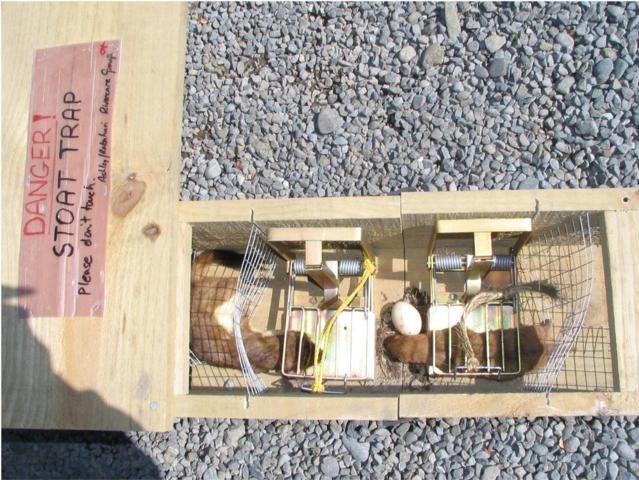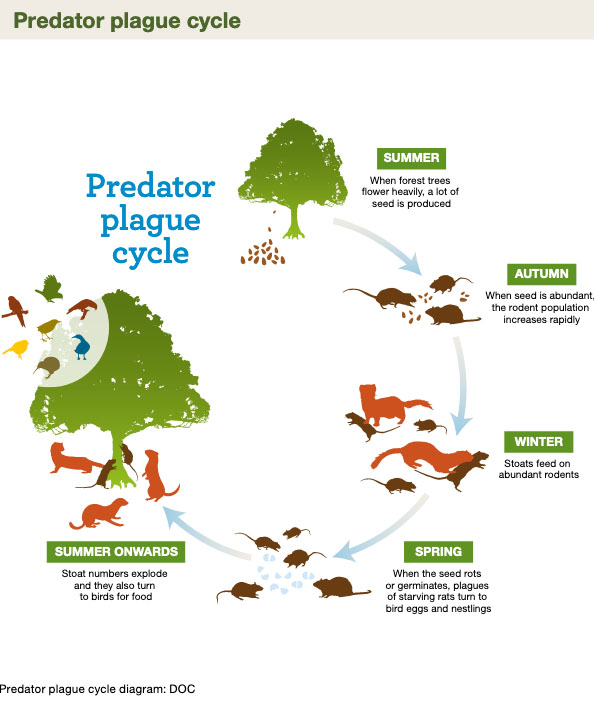The fieldwork which occupies us more than any other is trapping the predators which prey on our riverbed birds – mainly mustelids (stoats, weasels and ferrets), wild cats and hedgehogs. We have a team of trappers that operates about 80 traps throughout the year.
Over the last couple of years, we have made and sold hundreds of traps to individuals and groups, and for DOC. One member orders all the parts – the treated wooden box sides, the screws and nails needed to assemble them, the grills for the ends and the traps which go inside. Then a team of ARRG members gather in a member’s large garage to make the boxes and install the traps. Once the assembly line is up and running, we can produce finished traps at the rate of around 5/hour. Every trap is checked before getting the final tick, as the setting mechanism of DOC200s relies on correct distances of a few millimetres between moving parts.
Installing and using traps FAQ
Firstly, download this fantastic DOC guide to trapping.
- Before installing traps, you must first get permission from the landowner. This could be you, or if it’s on public or conservation lands or along a river, check with your local council or DOC as the land may be council-owned, RTA, or Crown land. They may be very happy for you to trap, but you still need permission.
- Please record trapping data as this helps towards understanding what predators are where, and how that fits into the big picture to make NZ Predator Free by 2050. If you accidentally trap something else, such as a duckling, that data is important too, as the information is used to help design better traps to protect our curious natives.
- Sharing your trap data: If you are setting a trap in an area/s currently trapped by a local conservation group, great! Let them know so they can add your data to theirs. If it’s just you, then please do register your trap with one of the national databases. If you are setting up traps with friends and neighbours, a great database is DOC’s ‘Walk the Line’. Contact your Regional Predator Free Ranger (in North Canterbury, that’s Sandy Yong) who will help you. This app. includes great resources and tools and lets you see what others in your area are doing.
- How to operate and install DOC200 traps, see the videos by the inventor of the traps, below.

Costs are GST exempt.
1. Standard DOC200 trap in a 400mm box – $85.00
2. Stainless Steel DOC200 trap in box – $105.00 (primarily used in coastal environments)
We sell both single orders from lifestyle property owners and up to 50-100 units for the Department of Conservation and conservation organisations. No GST is involved as we are a small charity run by volunteers to found our river care work, not a commercial operation.
We now label our traps with stencilled labels. Lids cannot be removed without a small tool, so they are safe in areas where there are children and curious pets.
We aim to supply to people in the Waimakariri District and surrounding areas but do give us a call of you are from further afield and can collect them locally.
For all enquiries, including requests for traps outside this region, please contact:
Nick Ledgard ph: 022 438 6711 or email [email protected]


